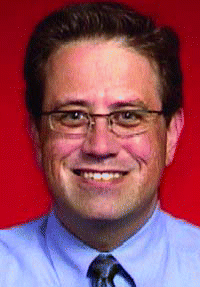Sometimes surgeons access upper regions of the skull to repair trauma by making incisions around the eye area, he said.
Explore This Issue
October 2007Thyroid Disease
Thyroid surgery is another example of a procedure for which physicians can obtain good cosmesis and successful medical outcomes. Specific techniques for ensuring cosmesis were explored in a recent journal article (Laryngoscope 2007;117:1168-72) authored by Dr. Terris and his colleagues.
We’re beginning to blur the lines between plastic surgery and thyroid surgery, and otolaryngologists have the responsibility of thinking like plastic surgeons, said Dr. Terris.
The wound care principles addressed in the Terris et al. article, as well as many of the surgical techniques, are applicable to other head and neck surgeries, commented Dr. Stack.
The Data
To explore factors contributing to improved cosmesis in thyroid surgery, Dr. Terris and his colleagues conducted a prospective, nonrandomized study of 248 consecutive thyroid surgical patients undergoing a procedure between September 2003 and June 2006. The mean age of patients was 44.9 ± 14.6 years, and 198 were female.
Based on patient and disease parameters, 31% of individuals underwent conventional thyroidectomy, 48.4% had minimally invasive nonendoscopic thyroidectomy (MINET), and 20.6% endoscopic thyroidectomy. Incision lengths were 92.4 ± 22.3 mm, 46.4 ± 9.9 mm, and 24.3 ± 5.9 mm, respectively.
Researchers found that marking patients while they were sitting upright before undergoing surgery, resecting skin edges during closure, avoiding subplatysmal flap elevation and drains, and using liquid skin adhesive instead of sutures were among the factors that resulted in good cosmesis.
These techniques are pretty well-known, said Philip Miller, MD, an otolaryngologist and facial plastic surgeon in private practice in New York. The authors are using techniques used elsewhere for cosmesis and modifying them for thyroid surgery.
Preoperative Markings
Preoperatively, Dr. Terris finds that having patients sit upright, as opposed to lying down on the operating table, makes finding natural creases in the skin for incision much easier. This is similar to what would be done for someone having a facelift or cosmetic breast surgery, said Dr. Terris.
Careful incision planning that requires the patient to sit upright preoperatively for marking is a good idea because it can increase the visibility of natural creases and allow for an incision that is better hidden, said Steven Davis, MD, an otolayrngologist at Centinela Freeman Regional Medical Center in Inglewood, CA.
Incision Size
Because cosmesis is becoming increasingly important in thyroid surgery, surgeons may want to consider using smaller incisions to minimize scarring, but only if patient characteristics and nodule size allow, said Dr. Stack, adding that the surgical techniques described in the Terris et al. article can also be applied to parathyroid surgery. He suggests taking out a ruler and measuring the incision during surgery. A ruler can help you have some personal accountability, he said.

Leave a Reply